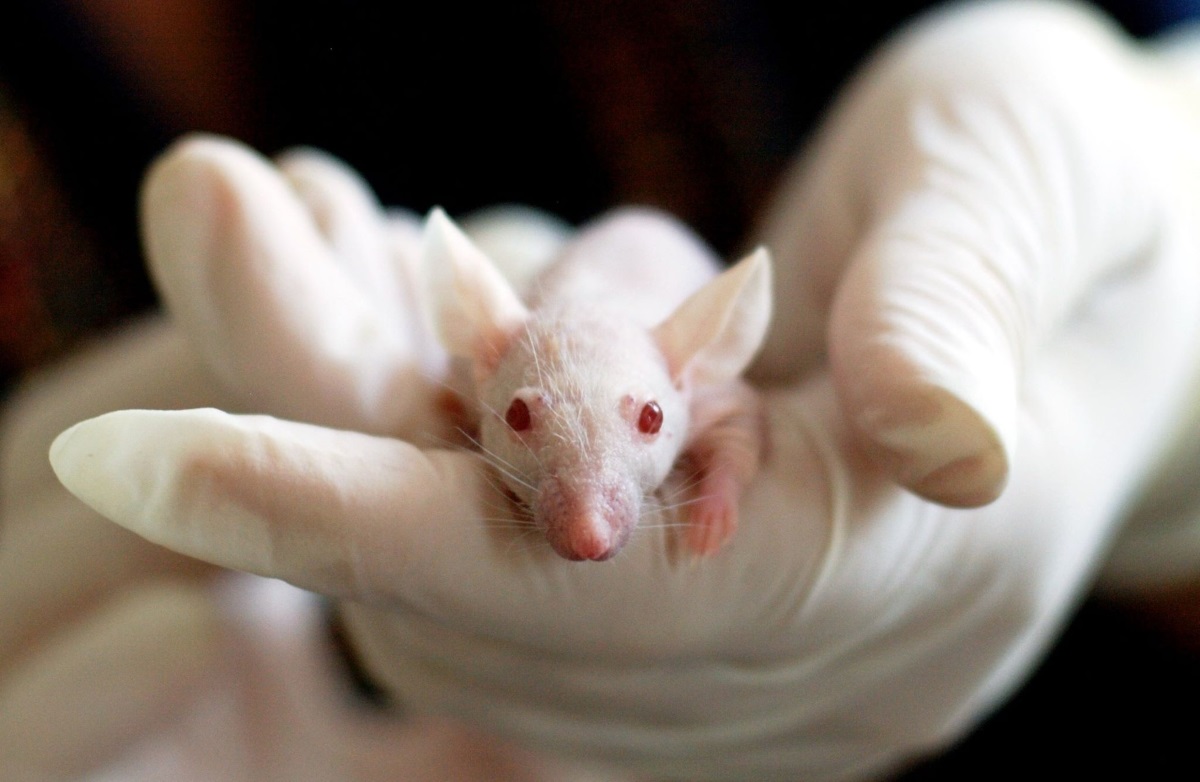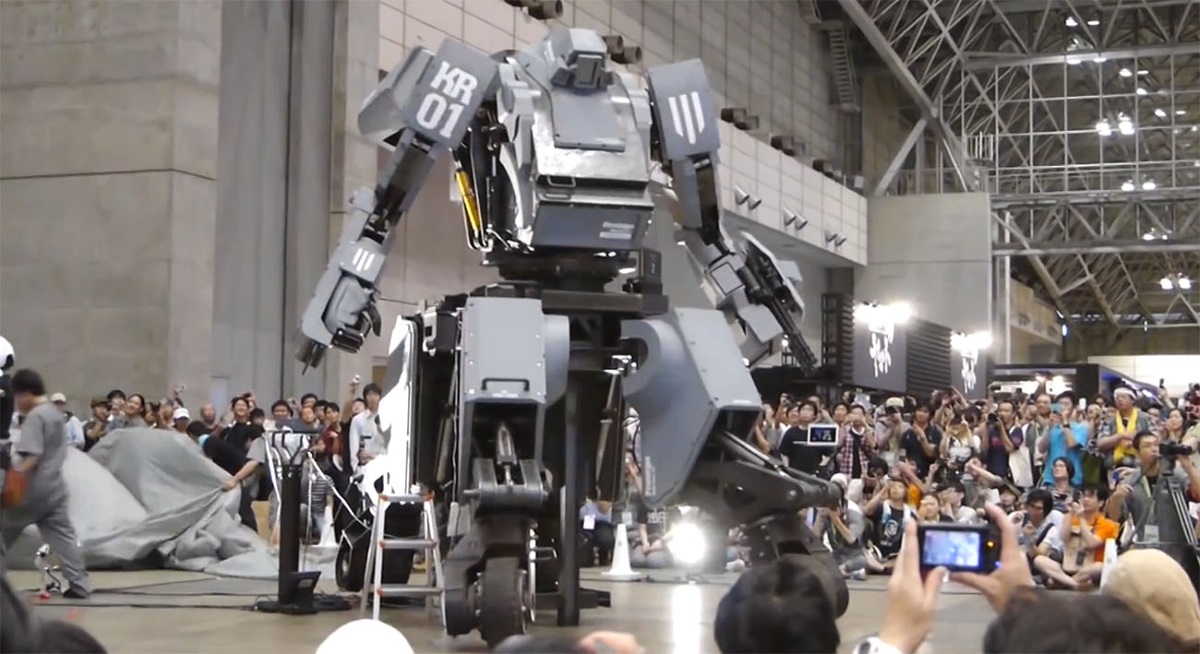Innovation Lab: Rumbling Cribs, Early Warning Mice and Mech Battles
- Thursday, April 13th, 2017
- Share this article:
At Mobile Marketing, we’re proud to help tech companies showcase their cutting-edge solutions, whether it’s on our website, in our magazine or at our Mobile Marketing Summits. Giving a platform to companies that are breaking new ground in their market brings audiences one step closer to the ideas and developments that will shape tomorrow.
In that spirit, our Innovation Lab feature takes a step beyond the world of apps, ads and handsets with slightly bigger screens, in order to share some of the tech world’s innovative ideas. They might be interesting, disruptive or just outright strange, but these are the stories that have caught our eye over the past week.
Let Your Baby Experience a Ride Around the Neighbourhood from the Comfort of a Crib
Many new parents will attest to the soothing power that the gentle hum and vibration of a car engine can have on a baby, sending them right off to sleep. Now Ford has decided to capitalise on that effect with the Max Motor Dreams, a small cot for infants that replicates the sensation.
While the cot is only a prototype, it’s a fully-realised creation which pairs to an app, enabling you to record the noise and movements to a specific journey. These sensations are then recreated using speakers and motors built into the bed.
“After many years of talking to mums and dads, we know that parents of newborns are often desperate for just one good night’s sleep,” said Alejandro López Bravo, designer of the cot. “But while a quick drive in the family car can work wonders in getting baby off to sleep, the poor old parents still have to be awake and alert at the wheel.”
The bed even includes integrated LED lighting that aims to mimic the gentle glow of yellow-hued streetlights, completing the illusion for children who fall asleep as soon as they’re placed in a car seat and feel the motor start running. Although the Max Motor Dreams was only intended as a proof-of-concept design, the team behind it have seen such demand that the company is officially considering putting it into production.
Genetically Modified Mice with Human Immune Systems Will Detect Flu Pandemics
Researchers in Germany have developed a ‘transgenic’ mouse with immune systems designed to more closely resemble that of humans, in order to serve as an ‘early warning system’ against new flu virus strains that could result in global pandemics.
The scientists at the Institute of Virology, Medical Centre University of Freiburg bred mice with human MxA, a key protein that exists in the human immune system. The resulting mice were susceptible to flu viruses that can be caught by humans, without having to wait for the viruses to mutate and cross over to a new species.
Influenza A viruses were responsible for both the swine and avian flu scares of the past decade, and crossed over to humans after acquiring a mutation that enabled them to avoid MxA, which normally protects humans from viruses that affect other species. The scientists found that by introducing MxA into the mice, they became immune to avian virus strains, but could be infected by flu viruses from humans.
“Our MxA-transgenic mouse can readily distinguish between MxA-sensitive influenza virus strains and virus strains that can evade MxA restriction and, consequently, possess a high pandemic potential in humans,” said Peter Staeheli, who helped lead the research. “Such analyses could complement current risk assessment strategies of emerging influenza virues.”
Smart Sports Bra Will Help You Beat Stress
We may feel stress mostly in our brain, but it can manifest in our body far before our conscious mind is aware of it, meaning that monitoring your biometrics can help you deal with both the symptoms and sources of stress before it impacts your day too much.
That’s the thinking behind Vitali, a smart sports bra currently seeking funding on Kickstarter. The bra monitors breathing, posture and heart rate variability to track your stress levels, and alert you whenever it detects biometrics that indicate your stress levels are on the rise, with an accompanying app to lead you through breathing exercises that can help you relax.
The app also includes a ‘wellness centre’ that can track your daily wellness, monitor your progress towards long-term goals and record your mindfulness practice, all with the aim of helping you to maintain a calm and balanced approach to life, and improve your natural response to stress, training it to be more resilient and cope better with life’s little roadbumps.
Japan and US Prepare for Giant Robot Battle
After several years of build-up, this summer will finally see a clash between two giant, piloted machines, one created by Californian robotics company Megabots, another by the Japanese firm Suidobashi, in a fight that will redefine the term “heavyweight clash”.
In 2015, Megabots’ creators challenged Suidobashi Heavy Industries to a “giant robot duel” between their Mark II and Kuratas devices. However, after the Japanese firm introduced hand-to-hand combat into the equation, the American firm had to delay to ensure that when the two robots did meet, their pilots wouldn’t be injured.
The new Mark III robot by Megabots stands at 16 feet tall and weighs 12 tons, with the Kuratas robot from Japan slightly smaller and lighter. The ‘mechs’ are equipped with weapons including twin rotary BB cannons, crushing claws and projectile launchers. The duel will take place on 17 August, and will be streamed live on YouTube.
‘Tarzan’ Robot Will Inspect Plants as They Grow
Agriculture is becoming increasingly automated, with farmers using robotic equipment to work fields and aerial drones to monitor large areas of land. But for close-up inspections, farmers still need to rely on repetitive and time-consuming daily checks. Now, researchers at Georgia Tech’s Institute of Robotics and Intelligent Machines have devised a solution.
The ‘Tarzan’ robot built by a team at the university is designed to be able to photograph individual plants and beam footage back to a central control point, helping farmers avoid the laborious process of doing so manually, and enabling them to monitor conditions like crop growth and leaf wilting.
By hanging from overhead wires, the robot can navigate crowded fields of crops without damaging any of the plants, and the swinging motion it uses is actually very energy-efficient. The designers hope that one day, it will be able to rely solely on solar power as it works its way back and forth across fields, sending back a steady stream of images and data.
















